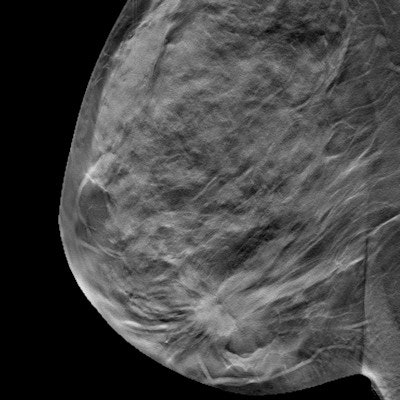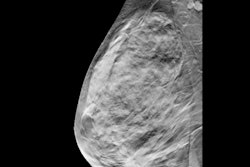
Digital breast tomosynthesis (DBT) may be useful for evaluating patients with focal breast pain, helping determine whether pain is caused by malignant or benign abnormalities, according to research published November 14 in Clinical Imaging.
A team led by Dr. Michael Taylor-Cho from Duke University found that not only is DBT useful for determining the source of breast pain but also there is a low incidence of breast cancer among patients experiencing pain. This is the case across all mammographic breast densities and breast cancer risk levels.
"To our knowledge, this is the first study to report the long-term outcomes and utility of DBT in women who present with primary focal breast pain," Taylor-Cho and colleagues said.
It's up for debate which imaging method is best for evaluating focal breast pain. While research has shown that breast cancer isn't typically found at the pain site on digital mammography and ultrasound, patients could still benefit from the use of imaging to detect benign abnormalities that could be causing the pain. However, breast density factors into the sensitivity of mammography and impacts the ability to detect imaging abnormalities at the site of pain.
Researchers have touted DBT as a promising method in improving lesion characterization, with lower false-positive rates and higher cancer detection rates for all age groups and across all mammographic breast densities. Therefore, Taylor-Cho et al wanted to explore the long-term outcomes and utility of DBT in workup of focal breast pain, taking mammographic breast density and breast cancer risk into consideration.
They looked at data collected between 2014 and 2017 from 91 women who were imaged with DBT and ultrasound for evaluation of focal breast pain. Of these, 16 women (18%) demonstrated findings on imaging, all of which were benign. One case was detected by DBT only, 14 were detected by ultrasound only, and one was detected by combining DBT with ultrasound. Ultrasound resulted in three benign biopsies, the study authors found.
Taylor-Cho and colleagues found that 76 women had no findings at the site of pain on ultrasound. Out of these, 75 also had no findings on DBT.
Of the 91 women in the study, 89 had no cancers detected at the site of pain on ultrasound and DBT. DBT also detected two incidental cancers not associated with pain. DBT and ultrasound also agreed that there was no finding at the site of pain in 75 out of 91 cases.
The team also found no difference in the incidence of breast cancer in the setting of primary focal breast pain when patients were stratified by breast density and breast cancer risk.
"A high degree of agreement between DBT and ultrasound was seen when stratified by breast density and Tyrer-Cuzick score," the study authors wrote.
The researchers said these findings suggest that radiologists may be able to maintain a low level of suspicion for breast cancer in patients with primary focal breast pain regardless of breast density or breast cancer risk, but they noted that future larger studies are needed.
"Additionally, the results support future study on the added utility of directed ultrasound in the setting of a normal DBT," they said.




















